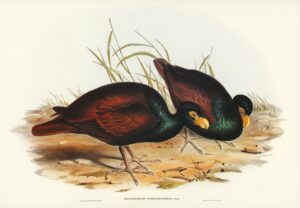In 2009, coyotes in Cape Breton Highlands National Park, Canada, fatally attacked 19-year-old Taylor Mitchell. The incident was the first fatal coyote attack in recorded North American history. It left researchers, wildlife advocates, and outdoor enthusiasts identically stymied. What could prompt such a dramatic change in coyote/human relations in the park?
Scientists publishing in the Journal of Applied Ecology believe they have an answer. Their paper is called Severe environmental conditions create severe conflicts: A novel ecological pathway to extreme coyote attacks on humans. In it, lead author Stan Gehrt argues that coyotes in that region are specializing in a unique way. They’ve begun to hunt and kill moose.
Extreme adaptation
Gehrt, a professor at Ohio State’s School of Environment and Natural Resources, argues that this change from small prey species (standard fare for coyotes) to large prey species (highly unusual) leads directly to potential conflicts with humans.

Through whisker and fur sample collection and analysis, wildlife researchers discovered that coyotes in Cape Breton Highlands National Park have adapted to view large species, such as moose, as prey. Photo: Shutterstock
“We’re describing these animals expanding their niche to basically rely on moose. And we’re also taking a step forward and saying it’s not just scavenging that they were doing, but they were actually killing moose when they could. It’s hard for them to do that, but because they had very little, if anything else, to eat, that was their prey,” Gehrt told CNET. “And that leads to conflicts with people that you wouldn’t normally see.”
Small prey vanished
Gehrt and his co-authors point to “extreme environmental conditions” as the reason that the park coyotes’ typical food sources vanished.
Gehrt’s team collected whiskers from the coyotes involved in the fatal attack and samples from coyotes involved in other non-fatal attacks. They also gathered samples from typical coyote prey (rodents, snowshoe hares, and other small mammals) and non-typical coyote prey (moose, humans).
By studying carbon and nitrogen isotypes, the team discovered that moose constituted between half and two-thirds of the coyotes’ diets. Coyote dropping analysis confirmed the findings.

Negative coyote/human interactions are not unusual, but there has only been one recorded fatal coyote attack on an adult in North America. Photo: Shutterstock
So what does this mean for the future of coyote-human relations? In short, scientists believe that nothing much has changed. Coyotes are incredibly adaptable — one of their defining traits — but the circumstances that led to the fatal attack are highly unusual.
“Our results suggest extreme unprovoked predatory attacks by coyotes on people are likely to be quite rare and associated with unique ecological characteristics,” Gerht’s paper states.






